HEARST CASTLE & PCH (Day 7 - part 6)
We wrapped our way back around Casa Grande.





The old tennis courts

The shuttle stop was located next to the Roman Pool, so we at least had a beautiful place to stand in line.
Built from 1927 - 1934 in the style of an ancient Roman bath, this indoor pool was covered with 1-inch square, glass mosaic tiles (called smalti). There was a wide range of colors, including clear with fused gold inside.
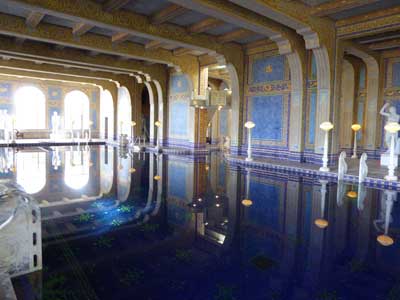

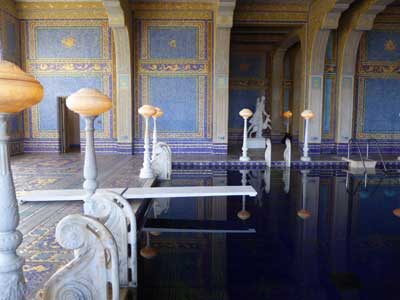



Eight marble statues, carved in 1930 by Carlo Freter, loitered about. These were copies of ancient statues of Greek and Roman deities and athletes.


Sparkly!


The shuttle ride back down the hill...


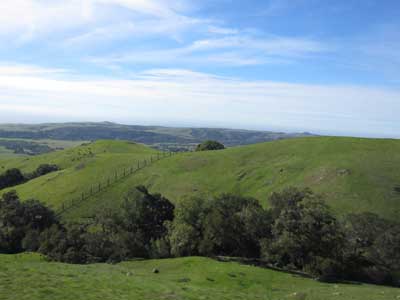

The shuttle dropped us back at the visitor center, where we hopped back in the car and continued down to the highway. On the way, we saw a small herd of zebras! Apparently the estate was once home to a large private zoo. There were deer, camels, kangaroos and even giraffes. A number of the animals were allowed to roam freely in large enclosures. Most of them are long gone, but some zebra now mingle in among the cattle.


A short ways up the highway was the Piedras Blancas Elephant Seal Rookery. The beach was completely packed with animals!
Northern elephant seals spend most of their lives at sea but come ashore at different times of the year to give birth, mate, molt (shed) and rest. This time of year (end January) was the peak of newborn pups.

The first section of beach was covered with giant males.


Their name from their large noses (found only on the adult males)... which somewhat resembles an elephant trunk. This helps them make very loud roaring noises, which can come in handy during mating season. It also helps them conserve moisture from their exhaling breaths so they don't have to drink as much during these dry times on the beach.
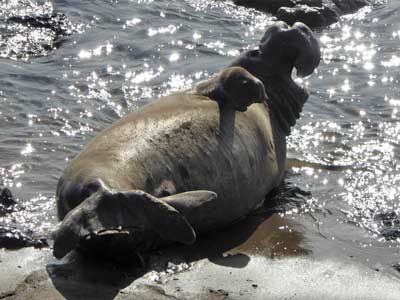

The males can get up to 5,000 pounds (the females are only around 1,600 pounds).


The second (larger) section of beach was completely littered with females and their newborns.


Elephant seals only eat when out at sea, so while they're on the beach, it is important for them to conserve energy.
At sea, elephant seals are solitary and can travel long distances. Most dives are 20 - 30 minutes but they have been recorded as long as over two hours! Generally they dive down 1,000 - 2,000 feet but can go as deep as 6,000 feet!


The pups are 60 - 80 pounds when born, but within a month, they will have quadrupled their weight. They spend a couple months here learning to swim and dive before going out to sea. They are born with black fur but gradually turn more grey.




They were very vocal!


It's not fully understood why they flip sand onto themselves. One thought is that it helps keep them cool under the hot sun. Another is that perhaps they simply enjoy it.

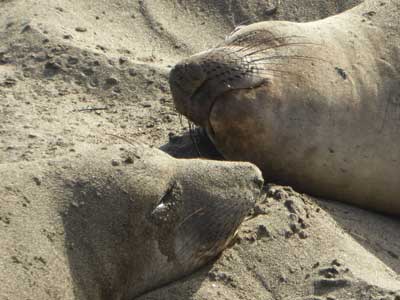


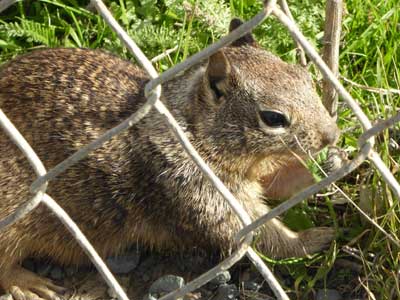
A California gathers something to eat nearby.
return • continue

